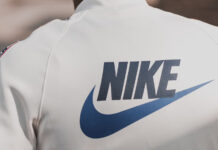The sporting goods industry has enjoyed a remarkable period of growth over the past several years, driven primarily by a surge in consumer interest in fitness, health, and outdoor activities. However, a revealing report by McKinsey & Company predicts that this growth is set to slow down significantly, with an expected annual decline of approximately 6% between 2024 and 2029. This analysis will explore the implications of this projected slowdown, the factors contributing to it, and examples from the industry that highlight the challenges and opportunities ahead.
The New Consumer Landscape
The McKinsey report highlights a significant shift in consumer behavior that is altering the landscape of the sporting goods market. After a golden era marked by an increase in demand for sports apparel and equipment, consumers are becoming more discerning. Economic factors, including inflation and a potential recession, are leading consumers to prioritize essential spending over discretionary items like sporting goods.
For instance, brands like Nike and Adidas have historically thrived on the demand for premium athletic apparel. However, as consumers tighten their budgets, these companies may face challenges in maintaining their market share without adjusting their pricing strategies. The report underscores that brands will need to find a balance between quality and affordability to satisfy a cost-conscious consumer base.
The Impact of E-commerce and Digital Transformation
The pandemic has significantly accelerated the shift towards online shopping, fundamentally changing how consumers engage with brands. According to McKinsey, e-commerce is now a dominant force in the sporting goods sector, with online sales expected to continue growing. Brands that can effectively leverage e-commerce channels to enhance customer engagement will be better positioned to navigate the impending slowdown.
For example, Lululemon has successfully embraced e-commerce and digital marketing strategies to enhance its online presence. By creating seamless shopping experiences and engaging with consumers through social media, Lululemon has built a loyal customer base that appreciates the combination of quality and convenience. This focus on digital transformation not only helps mitigate the impact of the anticipated slowdown but also fosters brand loyalty.
The Role of Sustainability
Sustainability remains a critical factor shaping the future of the sporting goods industry. As consumers become increasingly aware of environmental issues, brands that prioritize sustainable practices are likely to gain a competitive advantage. The McKinsey report indicates that consumers are willing to pay a premium for products that align with their values, particularly in terms of sustainability.
Brands like Patagonia have set a high standard for eco-friendly practices, leveraging their commitment to sustainability to attract environmentally conscious consumers. Patagonia’s initiatives, such as its Worn Wear program, encourage customers to repair and reuse their gear, exemplifying the brand’s dedication to reducing waste. This approach not only aligns with the growing demand for sustainability but also strengthens customer loyalty, making it a valuable strategy for weathering the industry’s upcoming challenges.
Market Saturation and Competition
Market saturation is another significant factor contributing to the projected slowdown in the sporting goods industry. The McKinsey report notes that increasing competition from emerging brands and discount retailers is creating challenges for established players. With numerous brands vying for market share, companies must differentiate themselves and continually innovate to stay relevant.
For example, Under Armour initially gained traction by introducing innovative products that appealed to athletes. However, as the market became more crowded, the brand faced difficulties maintaining its growth. To counteract this trend, Under Armour has refocused on its core strengths, emphasizing performance and quality to regain consumer trust and loyalty.
The Importance of Innovation
Innovation will play a crucial role in determining which brands succeed in the face of upcoming challenges. The McKinsey report emphasizes that companies must not only adapt to changing consumer preferences but also embrace technological advancements to enhance product offerings. Investing in research and development, as well as exploring new materials and production methods, can help brands stay ahead of the competition.
Adidas, for instance, has made significant strides in sustainability by investing in innovative materials, such as its Parley line, which features footwear made from recycled ocean plastic. This commitment to sustainability and innovation not only aligns with consumer demands but also positions Adidas as a leader in the industry.
Economic Factors and Brand Resilience
The broader economic climate will undoubtedly influence the growth trajectory of the sporting goods industry. Rising inflation rates and potential economic downturns may lead consumers to prioritize essential purchases over non-essential items. As a result, brands should be prepared for fluctuations in consumer spending and adapt their strategies accordingly.
In times of economic uncertainty, it is often the brands that emphasize quality and value that prevail. The McKinsey report highlights that investing in quality products can foster brand loyalty and resilience. For example, companies like New Balance, which focuses on producing high-quality athletic footwear, may find that their commitment to quality resonates with budget-conscious consumers seeking long-lasting products.
Conclusion: Adapting to Change
As the sporting goods industry braces for a slowdown, brands must navigate a complex landscape of shifting consumer behaviors, increased competition, and economic uncertainty. The McKinsey report serves as a critical reminder that adaptability and innovation will be essential for success in this evolving market. By prioritizing sustainability, leveraging e-commerce, and focusing on quality, brands can turn challenges into opportunities.
Ultimately, the sporting goods industry’s future will be shaped by its ability to embrace change and address the needs of a more discerning consumer base. As the market enters a new phase, those who can balance quality, affordability, and sustainability will not only survive but thrive in the coming years. The next five years present both challenges and opportunities, and the brands that recognize and respond to these shifts will be the ones that lead the industry into a new era of growth and resilience.






























